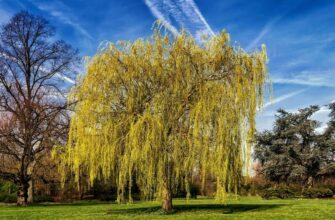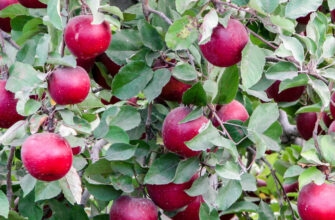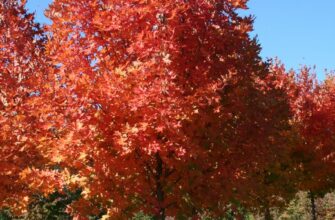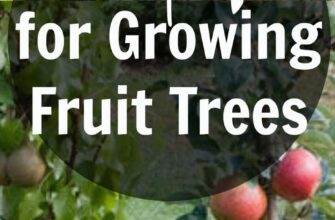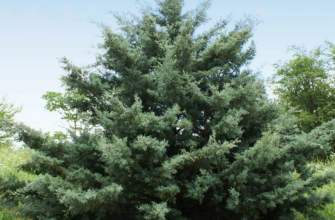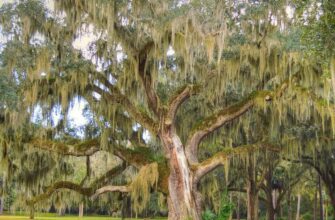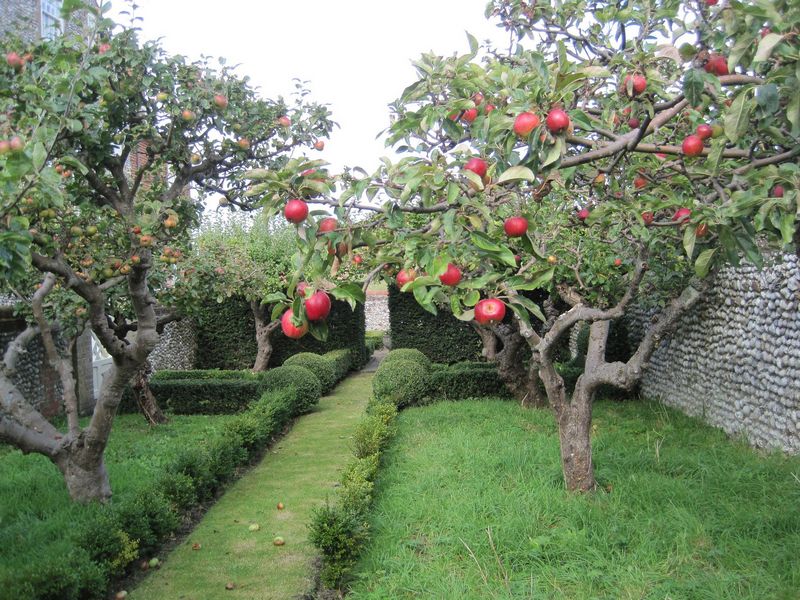
- Get Started with Your Own Apple Orchard in Your Backyard: Essential Tips and Advice
- Choosing the right location for your apple orchard
- Selecting the best apple varieties for your backyard orchard
- Preparing the soil for planting apple trees
- Planting apple trees in your backyard orchard
- Providing proper care and maintenance for your apple trees
- Pruning techniques for apple trees in your backyard orchard
- Protecting your apple orchard from pests and diseases
- Watering and irrigating your backyard apple orchard
- Fertilizing apple trees in your backyard orchard
- Harvesting apples from your backyard orchard
- Storing and preserving apples from your orchard
- Common problems and troubleshooting in backyard apple orchards
- Expanding your backyard orchard: Propagation techniques
- Attracting pollinators to your apple orchard
- Using organic practices in your backyard orchard
Get Started with Your Own Apple Orchard in Your Backyard: Essential Tips and Advice
If you have a backyard and a passion for apples, why not consider starting your own apple orchard? Not only will it provide you with a bountiful harvest of delicious and organic apples, but it can also be a rewarding and fulfilling hobby. Whether you’re a seasoned gardener or a beginner, these tips will help you get started on your backyard apple orchard journey.
Choose the right apple varieties
When starting an apple orchard, it’s important to choose the right apple varieties that are suitable for your climate and growing conditions. Some apple varieties thrive in cooler climates, while others prefer warmer temperatures. Consider factors such as chill hours, disease resistance, and pollination requirements when selecting your apple tree varieties. Research and consult local experts to determine which apple varieties will be the most successful in your backyard orchard.
Prepare the soil
Before planting your apple trees, it’s crucial to prepare the soil properly. Apples thrive in well-drained soil that is rich in organic matter. Test the pH level of your soil and make any necessary adjustments to ensure optimal growing conditions for your apple trees. Clear the area of any weeds or grass, and amend the soil with compost or other organic matter to improve its fertility. Proper soil preparation will lay the foundation for healthy and productive apple trees.
Planting and caring for your apple trees
When planting your apple trees, make sure to provide adequate spacing between each tree to allow for proper air circulation and sunlight exposure. Follow the recommended planting guidelines for your specific apple tree varieties. Regularly water your apple trees, especially during dry spells, and apply mulch around the base of the trees to conserve moisture and suppress weed growth. Prune your apple trees annually to promote healthy growth and remove any diseased or damaged branches. Regularly monitor your apple trees for signs of pests or diseases and take appropriate action to protect your orchard.
Harvesting and enjoying your apples
After several years of nurturing and caring for your apple orchard, the time will come to reap the rewards of your hard work. Harvest your apples when they are fully ripe, usually determined by their color, firmness, and taste. Gently twist or lift the apple from the tree to avoid damaging the branches. Store your apples in a cool and dark place to prolong their shelf life. Enjoy the fruits of your labor by incorporating them into delicious recipes or simply savoring them fresh from the tree.
Remember, starting a backyard apple orchard requires patience, dedication, and a love for nature. But with the right tips and guidance, you can create a thriving orchard that will bring you joy and abundance for years to come.
Choosing the right location for your apple orchard
When starting a backyard apple orchard, one of the most important decisions you’ll need to make is choosing the right location. The success of your orchard depends on factors such as sunlight, soil quality, and drainage.
Sunlight: Apples trees need full sun to thrive and produce high-quality fruit. Choose a location that receives at least 6-8 hours of direct sunlight per day. Avoid areas that are shaded by buildings, trees, or other structures.
Soil quality: Apple trees prefer well-drained soil with a pH level between 6.0 and 7.0. Conduct a soil test to determine the pH level and nutrient content of your soil. Amend the soil if necessary to create optimal growing conditions for your apple trees.
Drainage: Good drainage is crucial for the health of your apple trees. Avoid planting in low-lying areas or areas prone to flooding. Excess water can lead to root rot and other diseases that can damage or kill your trees.
Proximity to other trees: When choosing a location for your apple orchard, consider the proximity to other trees. Apple trees require cross-pollination to produce fruit, so it’s important to have other apple trees or compatible pollinators nearby. Check the pollination requirements of the apple varieties you plan to grow and ensure you have the right combination for successful pollination.
Space: Apple trees require adequate space to grow and spread their branches. Plan for enough space between trees to allow for proper air circulation and sunlight penetration. This will help prevent diseases and promote healthy growth.
By considering these tips when choosing the right location for your apple orchard, you can set your trees up for success and enjoy a bountiful harvest for years to come.
Selecting the best apple varieties for your backyard orchard
When starting an apple orchard in your backyard, it is important to carefully select the apple varieties that will thrive in your specific climate and growing conditions. Different apple varieties have different requirements for sunlight, soil type, and temperature, so it is crucial to choose varieties that are well-suited to your area.
Consider the chilling requirement: Different apple varieties have different chilling requirements, which is the number of hours of cold temperatures they need during the dormant period in order to properly set fruit. Be sure to select apple varieties that have a chilling requirement that matches the number of cold hours your area experiences.
Look for disease resistance: Certain apple varieties are more resistant to common apple diseases such as apple scab, powdery mildew, and fire blight. Choosing disease-resistant varieties can help reduce the need for chemical sprays and make your backyard orchard more sustainable.
Consider pollination: Many apple varieties require cross-pollination in order to produce fruit. Be sure to choose apple varieties that are compatible with each other and bloom at the same time, so that they can effectively pollinate each other and ensure a good fruit set.
Choose a mix of early, mid-season, and late-season varieties: By selecting a mix of apple varieties that ripen at different times, you can extend your apple harvest season and enjoy fresh apples for a longer period of time. This also helps to ensure that you have a continuous supply of apples throughout the season.
Consider the flavor and texture: Lastly, don’t forget to consider the flavor and texture of the apple varieties you are selecting. Some varieties are tart and crisp, while others are sweet and juicy. Choose varieties that you and your family enjoy eating, as well as those that are well-suited for cooking or baking.
Preparing the soil for planting apple trees
When starting an apple orchard, it is crucial to prepare the soil properly for planting the apple trees. The quality of the soil plays a significant role in the growth and productivity of the orchard.
Tip 1: Conduct a soil test to determine its pH level and nutrient content. This will help you understand the soil’s fertility and whether any amendments are needed.
Tip 2: Clear the area of any weeds, rocks, or debris that may hinder the growth of the apple trees. It is important to create a clean and well-prepared space for planting.
Tip 3: Dig a hole that is wide and deep enough to accommodate the apple tree’s root system. The depth should allow the tree to be planted at the same level as it was in the nursery.
Tip 4: Add organic matter, such as compost or well-rotted manure, to the soil. This will improve its structure, drainage, and nutrient-holding capacity.
Tip 5: Incorporate any necessary soil amendments based on the results of the soil test. This may include adjusting the pH level or adding specific nutrients that are deficient.
Tip 6: Consider using a cover crop or mulch to help suppress weeds, retain moisture, and improve soil fertility. This can be especially beneficial during the establishment phase of the apple orchard.
Tip 7: Finally, ensure that the soil is well-watered before planting the apple trees. Adequate moisture is essential for the trees to establish their roots and thrive in their new environment.
By following these tips and properly preparing the soil, you can create a favorable environment for your apple orchard and set the stage for healthy tree growth and abundant fruit production.
Planting apple trees in your backyard orchard
When starting a backyard orchard, planting apple trees is a popular choice for many gardeners. Apples are a versatile and delicious fruit that can be enjoyed fresh, cooked, or turned into cider. Here are some tips to help you get started with planting apple trees in your backyard.
1. Choose the right variety: There are hundreds of apple varieties to choose from, each with its own flavor profile and growing requirements. Consider factors such as climate, soil type, and pollination needs when selecting the right variety for your backyard orchard.
2. Prepare the soil: Apple trees prefer well-drained soil that is rich in organic matter. Before planting, prepare the soil by removing any weeds or grass and loosening it with a garden fork or tiller. Adding compost or aged manure can help improve the soil’s fertility.
3. Planting: Dig a hole that is wide and deep enough to accommodate the tree’s root system. Place the tree in the hole, making sure that the graft union (the swollen area where the scion and rootstock meet) is above the soil line. Backfill the hole with soil, firming it gently around the roots.
4. Pruning: Pruning is essential for shaping the tree and promoting healthy growth. Remove any dead or damaged branches, as well as any crossing or crowded branches. Prune in late winter or early spring before the tree starts to bud.
5. Watering and fertilizing: Apple trees need regular watering, especially during the first few years of growth. Water deeply, making sure the soil is moist but not waterlogged. Fertilize the tree in early spring and again in late spring or early summer with a balanced fertilizer.
6. Pest and disease control: Apple trees are susceptible to various pests and diseases, such as apple maggots, aphids, and apple scab. Monitor your trees regularly and take appropriate measures to control and prevent infestations. This may include using organic pest control methods or applying fungicides.
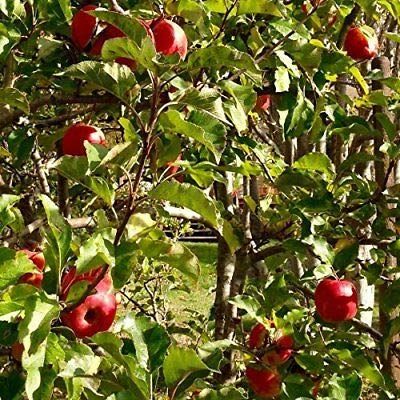
7. Harvesting: Depending on the variety, apples can be harvested from late summer to fall. Look for signs of ripeness, such as the color, firmness, and taste of the fruit. Gently twist or lift the apple to detach it from the tree, being careful not to damage the surrounding branches.
By following these tips, you can successfully plant and grow apple trees in your backyard orchard. With proper care and maintenance, you will be rewarded with a bountiful harvest of delicious apples for years to come.
Providing proper care and maintenance for your apple trees
When it comes to maintaining a backyard orchard, providing proper care for your apple trees is essential for their health and productivity. Here are some tips to help you ensure your apple trees thrive:
- Pruning: Regular pruning is crucial for apple trees as it helps promote better air circulation and sunlight penetration, which in turn reduces the risk of diseases and improves fruit quality. Prune your apple trees during the dormant season, removing any dead, damaged, or crossing branches.
- Fertilizing: Apple trees require regular fertilization to provide them with the necessary nutrients for growth and fruit production. Use a balanced fertilizer with a ratio of nitrogen, phosphorus, and potassium, following the recommended application rates based on your soil’s nutrient levels.
- Watering: Adequate watering is vital for apple trees, especially during dry periods. Provide deep, infrequent waterings to encourage deep root growth. Aim to keep the soil consistently moist but not waterlogged.
- Pest and disease control: Apple trees are prone to various pests and diseases, such as apple maggots, aphids, and apple scab. Implement regular monitoring and control measures, such as using organic insecticides or attracting beneficial insects to manage pests. Apply appropriate fungicides to prevent and treat diseases.
- Thinning: Thinning is an important practice to prevent overcrowding and ensure good fruit size and quality. Remove excess fruits when they are still small, leaving an adequate spacing between the remaining fruits to allow for proper development.
- Mulching: Apply a layer of organic mulch around the base of your apple trees to help conserve soil moisture, suppress weed growth, and regulate soil temperature. Avoid piling mulch against the trunk to prevent rotting.
By following these tips and providing proper care and maintenance for your apple trees, you can enjoy a bountiful harvest of delicious apples from your backyard orchard.
Pruning techniques for apple trees in your backyard orchard
Pruning is an essential practice for maintaining healthy and productive apple trees in your backyard orchard. Proper pruning techniques help to shape the tree, promote good airflow, and maximize fruit production.
One important technique is to remove any dead, damaged, or diseased branches. These branches can harbor pests and diseases, so it’s important to remove them as soon as possible. Use sharp pruning shears or a pruning saw to make clean cuts just outside the branch collar.
Another technique is to thin out the branches to improve light penetration and air circulation. This helps to reduce the risk of fungal diseases and allows the remaining branches to receive more sunlight. Remove any branches that are crossing or rubbing against each other, as well as any water sprouts or suckers that are growing straight up from the trunk.
When pruning apple trees, it’s also important to consider the tree’s growth habit. Some varieties are naturally more vigorous and may require more aggressive pruning to keep them in check. On the other hand, some varieties are naturally more compact and may require less pruning. It’s important to know the growth habit of your specific apple tree variety and adjust your pruning accordingly.
Lastly, it’s important to prune apple trees during the dormant season, typically in late winter or early spring. This is when the tree is least susceptible to diseases and the wounds will heal more quickly. Avoid pruning during periods of extreme cold or wet weather, as this can stress the tree.
In conclusion, pruning is a crucial aspect of maintaining healthy and productive apple trees in your backyard orchard. By following these pruning techniques, you can shape your trees, promote good airflow, and maximize fruit production.
Protecting your apple orchard from pests and diseases
When starting a backyard orchard, it is important to take steps to protect your apple trees from pests and diseases. These can significantly impact the health and productivity of your orchard. Here are some strategies to keep your apple trees safe:
- Regular monitoring: Keep a close eye on your apple trees and regularly inspect them for any signs of pests or diseases. Early detection can help prevent the spread and minimize damage.
- Pruning and sanitation: Proper pruning and sanitation practices can help remove diseased or infested branches, reducing the risk of infection. It is essential to dispose of any pruned material properly to prevent further spread.
- Choosing resistant varieties: When selecting apple tree varieties for your orchard, consider choosing those that are known to be resistant to common pests and diseases in your area. This can help reduce the need for chemical interventions.
- Using organic pest control methods: If possible, opt for organic pest control methods to minimize the use of synthetic pesticides. These can include introducing beneficial insects, using insecticidal soaps, and employing physical barriers like netting.
- Implementing proper irrigation: Proper irrigation practices can help prevent certain diseases, such as apple scab, which thrives in moist conditions. Avoid overwatering and ensure good drainage in your orchard.
- Regular fertilization: Providing your apple trees with the right nutrients can help improve their overall health and resilience against pests and diseases. Follow recommended fertilization guidelines for apple trees.
- Keeping the orchard clean: Regularly remove fallen leaves, fruits, and debris from the orchard floor. These can harbor pests and diseases, so keeping the area clean can help reduce their presence.
By implementing these strategies, you can help protect your apple orchard from pests and diseases, ensuring healthy and productive trees for years to come.
Watering and irrigating your backyard apple orchard
Proper watering and irrigation are essential for the success of your backyard apple orchard. Here are some tips to help you ensure that your apple trees receive the right amount of water:
- Establish a watering schedule: It is important to establish a regular watering schedule for your apple orchard. This will help ensure that the trees receive consistent moisture, which is crucial for their growth and fruit production.
- Monitor soil moisture: Regularly check the moisture levels in the soil around your apple trees. Stick your finger into the soil to a depth of a few inches. If it feels dry, it’s time to water. If it feels moist, hold off on watering for a few days.
- Use drip irrigation: Drip irrigation is a great option for watering your apple orchard. It delivers water directly to the base of the trees, minimizing water waste and ensuring that the roots receive adequate moisture.
- Apply mulch: Mulching around your apple trees can help retain soil moisture and prevent weed growth. Apply a layer of organic mulch, such as wood chips or straw, around the base of the trees, leaving a few inches of space around the trunk to prevent rot.
- Water deeply: When you water your apple trees, make sure to water deeply. This means providing enough water to penetrate the root zone, which is typically about 12-18 inches deep. This encourages the roots to grow deeper and makes the trees more resilient to drought.
Remember, the watering needs of your apple orchard may vary depending on factors such as weather conditions, soil type, and tree age. It’s important to observe your trees and adjust your watering practices accordingly. With proper watering and irrigation, you can help your backyard apple orchard thrive and produce a bountiful harvest of delicious apples.
Fertilizing apple trees in your backyard orchard
Proper fertilization is essential for the health and productivity of apple trees in your backyard orchard. Here are some tips to help you get started:
- Choose the right fertilizer: Select a balanced fertilizer that contains nitrogen, phosphorus, and potassium. Look for a formulation specifically designed for fruit trees.
- Timing is key: Apply fertilizer in early spring before the trees start to blossom. This will ensure that the nutrients are available when the trees need them the most.
- Follow the instructions: Read the label on the fertilizer package carefully and follow the recommended application rates. Over-fertilizing can be harmful to the trees.
- Spread it evenly: Distribute the fertilizer evenly around the base of each tree, extending it slightly beyond the drip line. This will provide nutrients to the entire root system.
- Consider organic options: If you prefer organic gardening, there are plenty of organic fertilizers available that are suitable for apple trees. These options are derived from natural sources and can help improve soil health.
Remember, fertilizing is just one part of maintaining a healthy apple orchard in your backyard. Regular pruning, proper watering, and pest control are also important factors to consider for the overall success of your orchard.
Harvesting apples from your backyard orchard
When you have a backyard orchard, one of the most exciting times of the year is the apple harvest. It’s the culmination of all your hard work in starting and maintaining your apple trees. Here are some tips to help you make the most of your apple harvest:
- Timing is key: Apples should be harvested when they are fully ripe but not overripe. This is usually when the fruits have reached their full color and are easily detachable from the tree with a gentle twist.
- Handle with care: Apples are delicate fruits and can bruise easily. When harvesting, make sure to handle them gently to avoid any damage. It’s best to place them into a soft container or basket to prevent bruising.
- Sort and store: After harvesting, sort your apples based on their size, color, and quality. Remove any damaged or diseased fruits and store the healthy ones in a cool, dry place. You can use crates or boxes lined with newspaper or straw to keep them fresh.
- Enjoy your harvest: Once you have harvested your apples, it’s time to enjoy the fruits of your labor! Apples can be used in a variety of ways, from fresh eating to baking delicious pies and making homemade applesauce. Get creative and savor the flavors of your backyard orchard.
Having your own backyard orchard is a rewarding experience, and the apple harvest is a special time. By following these tips, you can ensure that your harvest is successful and that you get to enjoy the delicious taste of homegrown apples.
Storing and preserving apples from your orchard
Once you have harvested the apples from your backyard orchard, it is important to store and preserve them properly to ensure their longevity and quality. Here are some tips to help you with this process:
- Sort the apples: Before storing the apples, make sure to sort them based on their size, ripeness, and any visible signs of damage. This will help you identify which apples need to be consumed first and which ones can be stored for a longer period of time.
- Choose the right storage method: There are several options for storing apples, including refrigeration, cold storage, and cellar storage. Each method has its own advantages and disadvantages, so it is important to choose the one that suits your needs and resources best.
- Wrap the apples: To prevent the apples from bruising or rotting, wrap each apple individually in a piece of newspaper or tissue paper. This will provide a protective layer and help maintain the freshness of the fruit.
- Control the temperature and humidity: Apples are best stored at a temperature between 30 and 40 degrees Fahrenheit and a humidity level of 90-95%. This will help slow down the ripening process and prevent the apples from drying out.
- Check regularly: It is important to check the stored apples regularly for any signs of spoilage or decay. Remove any apples that show signs of rotting or mold to prevent them from affecting the other apples.
By following these tips, you can ensure that the apples from your backyard orchard stay fresh and delicious for an extended period of time. Whether you plan to enjoy them as a snack, use them in your favorite recipes, or share them with friends and family, proper storage and preservation techniques are essential for maintaining the quality of your homegrown apples.
Common problems and troubleshooting in backyard apple orchards
When it comes to growing apple trees in your backyard orchard, there are a few common problems that you may encounter. Understanding these issues and knowing how to troubleshoot them can help you maintain a healthy and productive orchard. Here are some tips for dealing with common problems in your backyard apple orchard:
- Pest infestation: One of the most common problems in apple orchards is pest infestation. Insects like apple maggots, codling moths, and aphids can damage the fruit and leaves of your apple trees. To prevent infestations, you can use insecticidal sprays or attract beneficial insects like ladybugs and lacewings to your orchard.
- Disease: Apple trees are susceptible to various diseases, such as apple scab, powdery mildew, and fire blight. These diseases can cause leaf spots, fruit rot, and overall decline in tree health. To prevent diseases, you can choose disease-resistant apple tree varieties, practice good sanitation by removing fallen leaves and debris, and apply fungicides when necessary.
- Poor pollination: Inadequate pollination can result in poor fruit set and small, misshapen apples. To ensure proper pollination, you should plant at least two different apple tree varieties that bloom at the same time. You can also attract pollinators like bees and butterflies to your orchard by planting flowers and providing a water source.
- Improper pruning: Pruning is essential for maintaining the shape, size, and health of apple trees. However, improper pruning can lead to excessive vegetative growth, reduced fruit production, and increased susceptibility to diseases. It is important to learn proper pruning techniques and prune your apple trees during the dormant season to promote good air circulation and light penetration.
- Watering and irrigation: Apple trees require regular watering, especially during dry periods. Overwatering or underwatering can stress the trees and affect their growth and fruit production. It is important to provide a consistent and adequate water supply to your apple trees, ensuring that the soil is moist but not waterlogged.
- Soil fertility: Apple trees require well-drained, fertile soil for optimal growth and fruit production. If your soil is lacking in nutrients, you may need to amend it with organic matter or fertilizers. Regular soil testing can help you determine the nutrient levels in your soil and guide your fertilization practices.
By being aware of these common problems and taking proactive measures to address them, you can ensure the success of your backyard apple orchard and enjoy a bountiful harvest of delicious apples.
Expanding your backyard orchard: Propagation techniques
If you have already started your backyard orchard and are looking to expand your collection of apple trees, there are several propagation techniques you can use. These techniques will allow you to grow new apple trees from the ones you already have, ensuring that you have a diverse and thriving orchard.
One of the most common propagation techniques is grafting. Grafting involves taking a small branch, or scion, from an existing apple tree and attaching it to a rootstock. The rootstock provides the tree with a strong and healthy root system, while the scion determines the fruit variety. Grafting allows you to create new trees that are genetically identical to the parent tree, ensuring that you will have apples with the same desired traits.
Another propagation technique is budding. Budding is similar to grafting, but instead of attaching a branch to a rootstock, a bud from the desired variety is inserted into the bark of a rootstock. This technique is often used when the scion wood is not readily available or when you want to create a large number of new trees.
If you are looking to propagate a large number of apple trees, you may also consider using tissue culture. Tissue culture involves taking a small piece of tissue from a parent tree and growing it in a laboratory. This technique allows for rapid multiplication of trees and can be used to produce thousands of new apple trees in a short period of time.
Regardless of the propagation technique you choose, it is important to ensure that you are using healthy and disease-free plant material. This will help to ensure the success of your new trees and prevent the spread of pests and diseases in your orchard.
By utilizing these propagation techniques, you can continue to expand your backyard orchard and enjoy a wide variety of delicious apples for years to come.
Attracting pollinators to your apple orchard
One of the key factors in starting a successful apple orchard in your backyard is attracting pollinators. Pollinators, such as bees and butterflies, play a crucial role in the pollination process, which is essential for apple trees to produce fruit. Here are some tips to attract pollinators to your apple orchard:
- Plant native flowers: Native flowers are a great source of nectar and pollen for pollinators. By planting a variety of native flowers around your apple orchard, you can provide a diverse and abundant food source for bees and butterflies.
- Provide water sources: Pollinators need water to survive, so it’s important to provide them with a water source in your orchard. You can create a small pond or birdbath where pollinators can drink and cool off.
- Avoid pesticides: Pesticides can be harmful to pollinators, so it’s best to avoid using them in your orchard. Instead, opt for natural methods of pest control, such as introducing beneficial insects or using organic sprays.
- Plant flowering trees: In addition to native flowers, planting flowering trees in your orchard can also attract pollinators. Trees like cherry, plum, and crabapple not only provide food for pollinators but also offer them a place to rest and shelter.
- Create nesting habitats: Pollinators need a place to nest and lay their eggs. You can provide nesting habitats for bees by leaving some bare ground or creating bee houses in your orchard. Butterflies also need specific host plants for their larvae, so make sure to include them in your orchard.
By following these tips, you can create a welcoming environment for pollinators in your apple orchard. Not only will this help improve the pollination process and increase fruit production, but it will also contribute to the overall health and biodiversity of your backyard ecosystem.
Using organic practices in your backyard orchard
If you are planning to start an apple orchard in your backyard, using organic practices can help you grow healthy and delicious apples while minimizing the use of synthetic chemicals and pesticides. Here are some tips to help you get started:
- Choose disease-resistant apple varieties: Selecting apple varieties that are naturally resistant to common diseases can greatly reduce the need for chemical treatme
